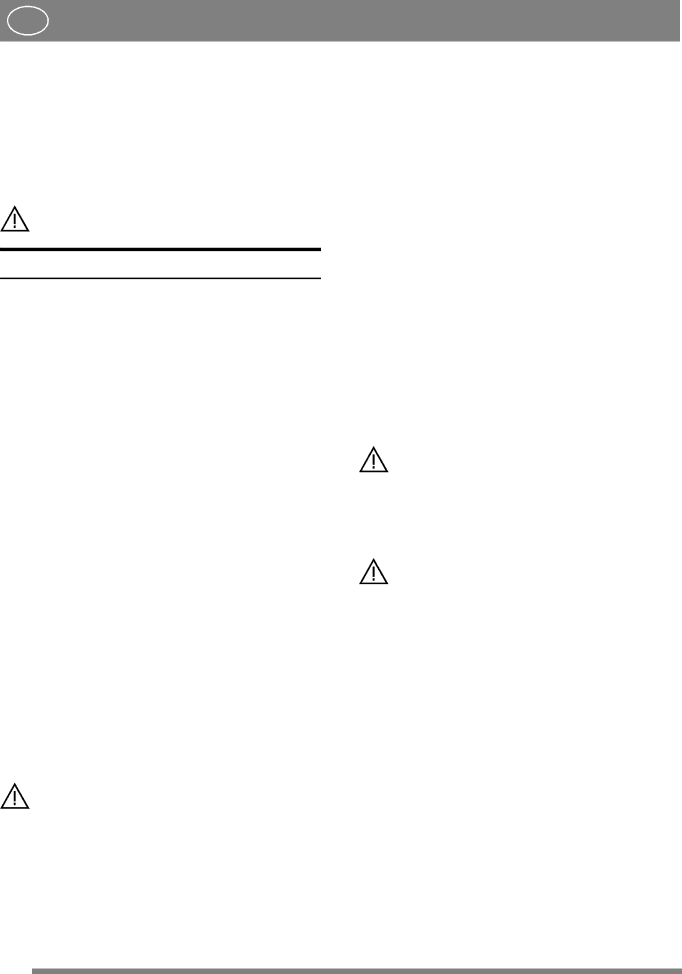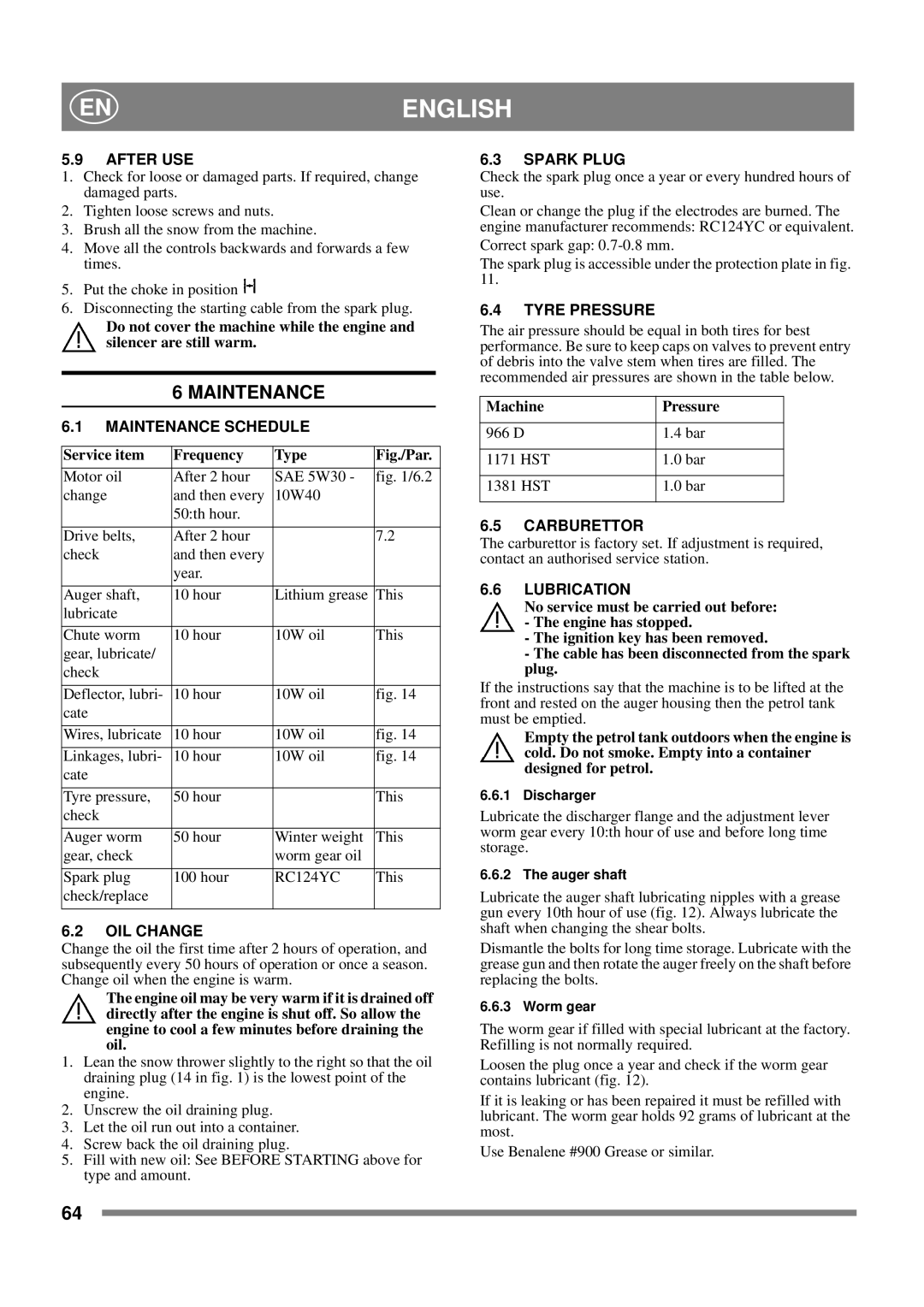1171 HST, 1381 HST, 966D specifications
The Stiga brand has made a name for itself in the lawn care and garden equipment market, particularly with its innovative tractor models like the 1171 HST, 1381 HST, and 966D. Each of these lawn tractors offers different features and technologies tailored to the diverse needs of homeowners and professional landscapers alike.The Stiga 1171 HST is designed with a powerful 11.7 kW engine, allowing for efficient performance and exceptional reliability. This model features a hydrostatic transmission, providing seamless speed adjustments and direction changes without the need for gear shifting. The 1171 HST is equipped with a 71 cm cutting deck, which offers excellent maneuverability and cutting efficiency in tight spaces. Moreover, its cutting height can be easily adjusted in several positions, enabling users to achieve the desired grass length for their lawns.
Following closely is the Stiga 1381 HST, which is designed for those who desire added power and a larger cutting area. This model boasts a robust 13.8 kW engine and a cutting deck that measures 81 cm. The powerful engine, combined with the hydrostatic transmission, ensures that operators can tackle larger gardens or more challenging terrain with ease. The 1381 HST also features an ergonomic seat and steering wheel, enhancing user comfort during prolonged use. Its large grass collector allows for extended mowing sessions without frequent emptying, making it a convenient choice for larger properties.
Meanwhile, the Stiga 966D presents a distinctive offering with its diesel engine, combining fuel efficiency and power. This model is particularly suitable for users who require a tractor for heavy-duty tasks. The 966D features a wide 95 cm cutting deck, making it an excellent choice for expansive lawns. Its heavy-duty construction allows for durability and longevity, which is essential for regular use. Similar to the other models, it features an adjustable cutting height and hydrostatic transmission, making mowing easier and more efficient.
All three models incorporate advanced technologies, such as Stiga’s patented blade engagement system, which ensures smoother operation and increased safety. Their designs prioritize user comfort with ergonomic features, making these tractors suitable for both casual users and professional landscapers.
In summary, Stiga's 1171 HST, 1381 HST, and 966D models stand out due to their distinct characteristics, powerful engines, and user-friendly features. Whether for moderate mowing tasks or demanding landscapes, Stiga’s range provides versatile options tailored to meet various gardening needs.

